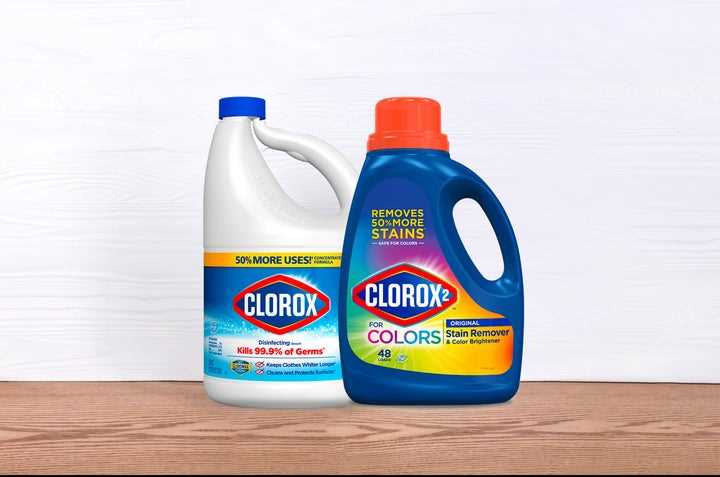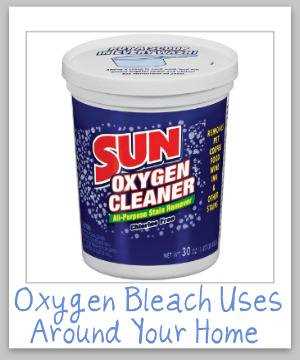




When it comes to household cleaning, bleach is often the go-to product for many people. It has been used for decades to disinfect and brighten surfaces, whiten laundry, and remove tough stains. However, in recent years, a new player has emerged in the world of cleaning products – oxygen bleach.
Oxygen bleach is a gentler alternative to traditional bleach, and it has gained popularity for its effectiveness and eco-friendly properties. Unlike bleach, which contains harsh chemicals such as chlorine, oxygen bleach uses hydrogen peroxide to clean and bleach surfaces. This makes it a safer option for both people and the environment.
One of the main differences between bleach and oxygen bleach is their chemical composition. Bleach is typically made up of sodium hypochlorite, while oxygen bleach contains sodium percarbonate. This difference in composition leads to different cleaning properties and uses for each product.
While bleach is known for its ability to kill germs and disinfect surfaces, oxygen bleach is more commonly used for stain removal and brightening. Oxygen bleach is less likely to cause damage to fabrics and surfaces, making it a popular choice for cleaning items such as carpets, upholstery, and delicate clothing.
Overall, the choice between bleach and oxygen bleach depends on the specific cleaning needs and preferences of the individual. Bleach may be more suitable for heavy-duty cleaning and disinfection, while oxygen bleach may be a better option for delicate fabrics and stain removal. Both products have their advantages and disadvantages, and it’s important to read and follow the instructions on the packaging to ensure safe and effective use.
Chemical Composition
Oxygen bleach, also known as sodium percarbonate, is composed of two substances: sodium carbonate and hydrogen peroxide. Sodium carbonate is a white crystalline powder that helps break down and remove stains, while hydrogen peroxide is a powerful oxidizing agent that can lift dirt and grime from surfaces.
Bleach, on the other hand, is typically made up of sodium hypochlorite. It is a strong oxidizing agent that can kill bacteria, viruses, and other microorganisms. Sodium hypochlorite is a liquid solution that is clear or slightly yellow in color.
Both oxygen bleach and bleach have their own strengths and weaknesses when it comes to cleaning and disinfecting. Oxygen bleach is considered to be gentler on fabrics and colors, making it ideal for laundry use. It is also an environmentally-friendly option, as it breaks down into oxygen and water during the cleaning process.
On the other hand, bleach is a more powerful disinfectant and can effectively kill a wide range of microorganisms. It is commonly used for disinfecting surfaces in kitchens and bathrooms, as well as for whitening and sterilizing laundry. However, bleach can be harsh on fabrics and may cause color fading or damage if not used correctly.
Overall, the chemical composition of oxygen bleach and bleach differs, leading to differences in their cleaning capabilities and how they interact with various surfaces and materials. It is important to consider these factors when choosing between the two for specific cleaning tasks.
Effectiveness and Use
Both bleach and oxygen bleach are effective in removing stains and disinfecting surfaces. However, they have different properties and uses.
Bleach

- Effectiveness: Bleach, also known as chlorine bleach or sodium hypochlorite, is a powerful disinfectant and stain remover. It can effectively kill bacteria, viruses, and fungi.
- Use: Bleach is commonly used for laundry purposes to remove tough stains like blood, grass, or wine. It can also be used for household cleaning to disinfect surfaces, clean toilets, and remove mold and mildew.
- Cautions: When using bleach, it is important to follow safety precautions, such as wearing protective gloves and ensuring good ventilation. Bleach can be harmful if ingested or if it comes into contact with skin or eyes. It should also be kept out of reach of children.
Oxygen Bleach

- Effectiveness: Oxygen bleach, also known as non-chlorine bleach or hydrogen peroxide bleach, is a milder alternative to chlorine bleach. It is effective in removing stains and as a household cleaner.
- Use: Oxygen bleach is commonly used for laundry purposes, especially for delicate fabrics or colored clothing. It is also used for general household cleaning, including cleaning surfaces, removing stains from carpets, and washing dishes.
- Cautions: Oxygen bleach is generally safe to use and does not produce harsh fumes like chlorine bleach. However, it may cause irritation if it comes into contact with the eyes or skin. It is always important to follow the product instructions and take precautions to prevent direct contact.
Overall, the choice between bleach and oxygen bleach depends on the specific needs and preferences of the user. While bleach is a more powerful disinfectant, oxygen bleach may be a better option for those seeking a milder alternative or for use on delicate fabrics and colored items.
Safety Considerations

When using any type of bleach, it is important to follow safety guidelines to protect yourself and others from potential harm. Both bleach and oxygen bleach should be handled with care and used in a well-ventilated area. Here are some safety considerations to keep in mind:
1. Eye and Skin Protection
When working with bleach or oxygen bleach, it is essential to protect your eyes and skin. Wear safety goggles and rubber gloves to prevent any contact with these chemicals. If any bleach comes in contact with your skin or eyes, immediately rinse it off with plenty of water and seek medical attention if necessary.
2. Inhalation Precautions

Bleach releases strong fumes that can be irritating and potentially harmful when inhaled. To avoid breathing in these fumes, make sure to work in a well-ventilated area. Open windows and doors, or use a fan or exhaust system to improve air circulation. If you start experiencing symptoms like dizziness, headache, or difficulty breathing, move to a well-ventilated area and seek fresh air.
3. Mixing Precautions

Never mix bleach or oxygen bleach with other cleaning products, especially ammonia. This combination can create toxic gases, such as chloramine and chlorine gas, which can be extremely dangerous. Always read the labels of cleaning products and follow the manufacturer’s recommendations for safe usage.
4. Environmental Considerations
Both bleach and oxygen bleach can have an impact on the environment. When disposing of these substances, follow local regulations and guidelines. Do not pour bleach or oxygen bleach directly into drains or bodies of water. Instead, dilute them with water and dispose of them properly.
By following these safety considerations, you can use bleach or oxygen bleach effectively while minimizing the risk of accidents or harm.
Environmental Impact

When comparing the environmental impact of bleach and oxygen bleach, it is important to consider several factors. Bleach, which contains chemicals like sodium hypochlorite, can have negative effects on the environment. It is known to produce toxic fumes when used, which can be harmful to both humans and the environment. These fumes contribute to air pollution and can even lead to the formation of smog.
In addition to air pollution, bleach can also contaminate water sources if not used and disposed of properly. The chemicals in bleach can be toxic to aquatic life and disrupt the balance of ecosystems. When bleach is used in large quantities or improperly disposed of, it can harm fish, plants, and other organisms in rivers, lakes, and oceans.
Oxygen bleach, on the other hand, is considered to have a lower environmental impact. It does not produce toxic fumes when used and is generally non-toxic to humans and animals. Oxygen bleach is biodegradable and breaks down into water, oxygen, and sodium carbonate. This makes it a safer alternative for the environment compared to bleach.
Furthermore, oxygen bleach is safe to use on colored fabrics and can be a better choice for those looking to reduce their environmental footprint. It is important to note that not all oxygen bleach products are created equal, and some may still contain additional chemicals that could impact the environment. However, overall, oxygen bleach is considered to be a more environmentally friendly option compared to bleach.
FAQ
What is bleach and what is oxygen bleach?
Bleach is a chemical compound that is commonly used for removing stains and disinfecting surfaces. Oxygen bleach, on the other hand, is a type of bleach that uses hydrogen peroxide to remove stains and whiten fabrics without the use of chlorine.
What are the main differences between bleach and oxygen bleach?
The main difference between bleach and oxygen bleach is the presence of chlorine. Bleach contains chlorine, while oxygen bleach uses hydrogen peroxide. This makes oxygen bleach a safer and more environmentally-friendly option compared to traditional bleach.
Can both bleach and oxygen bleach be used on all types of fabrics?
No, bleach should only be used on white or colorfast fabrics, as it can cause fading or damage to certain materials. Oxygen bleach, on the other hand, is generally safe to use on most types of fabrics, including colored ones, as it is gentler and less likely to cause damage.
Which is more effective in removing stains, bleach or oxygen bleach?
Both bleach and oxygen bleach are effective in removing stains, but their effectiveness may vary depending on the type of stain and fabric. Bleach is generally more powerful and works well on tough stains, but it may not be suitable for all fabrics. Oxygen bleach is milder, but still effective in most cases, and is a safer option for delicate fabrics.














